Abstract
A total of 959 faecal samples were obtained from dogs in 12 native communities in Northern Saskatchewan, Central and Northern Alberta and the Northwest Territories. All samples were examined using a flotation technique. Samples from an area of endemic human amoebic infections were also examined by a formol-ether sedimentation method. Eighteen necropsies were performed.
Entamoeba histolytica cysts were recovered from dog faeces at Loon Lake, Saskatchewan.
Toxocara canis had low incidence in Saskatchewan and Central Alberta, and appeared to be almost non-existent further North. Toxascaris leonina was found in all areas surveyed. Canine hookworm infections were plentiful in all areas, the highest incidence being recorded from Northern Alberta and Northwest Territories. Many Taenia (or Echinococcus) infections were found consistently in all areas. Only one infection with Dipylidium caninum was discovered.
Metorchis conjunctus infections were found to be common in the Saskatchewan reserves. Infections with Diphyllobothrium sp. were found in all communities with access to good fishing. One specimen of Dioctophyma renale was recovered at necropsy.
Infections with parasites of no known zoonotic importance such as Trichuris, Alaria and Isospora species were also recorded.
Full text
PDF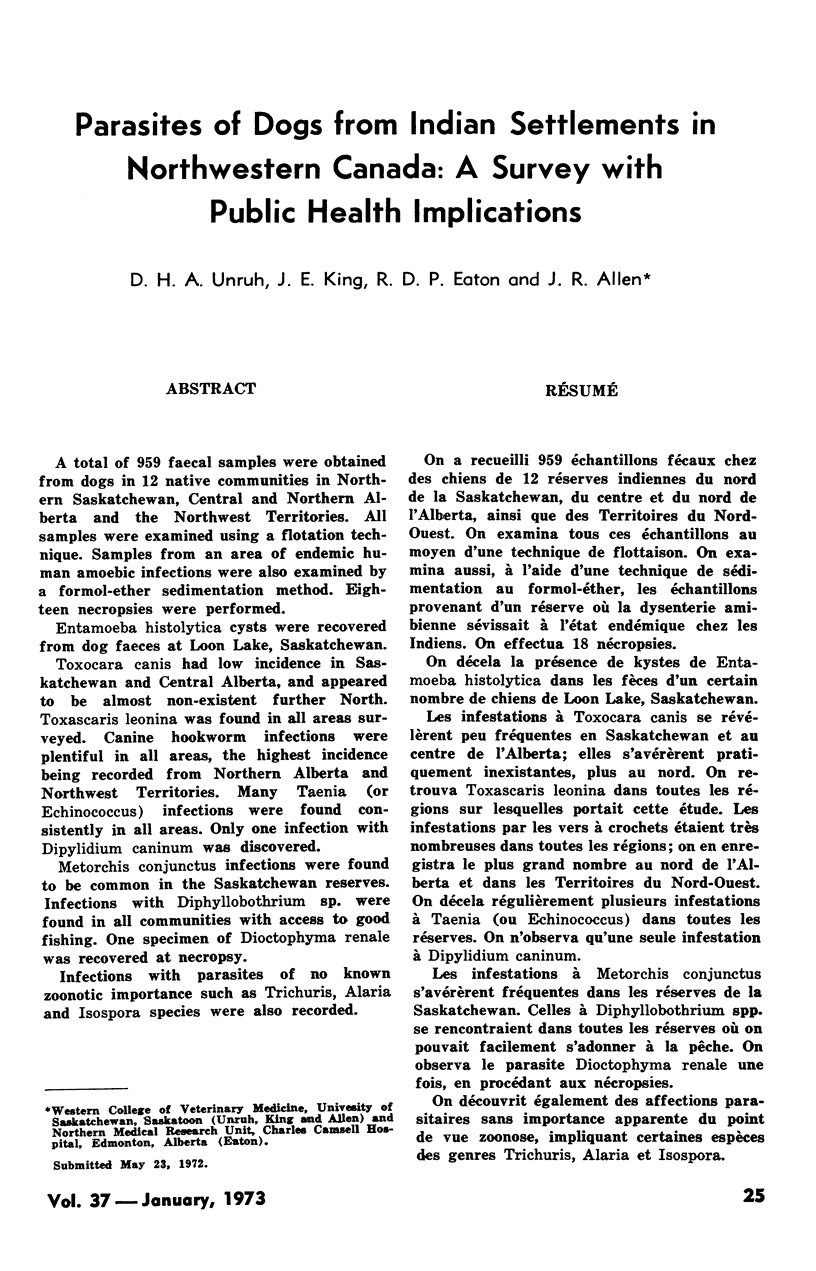
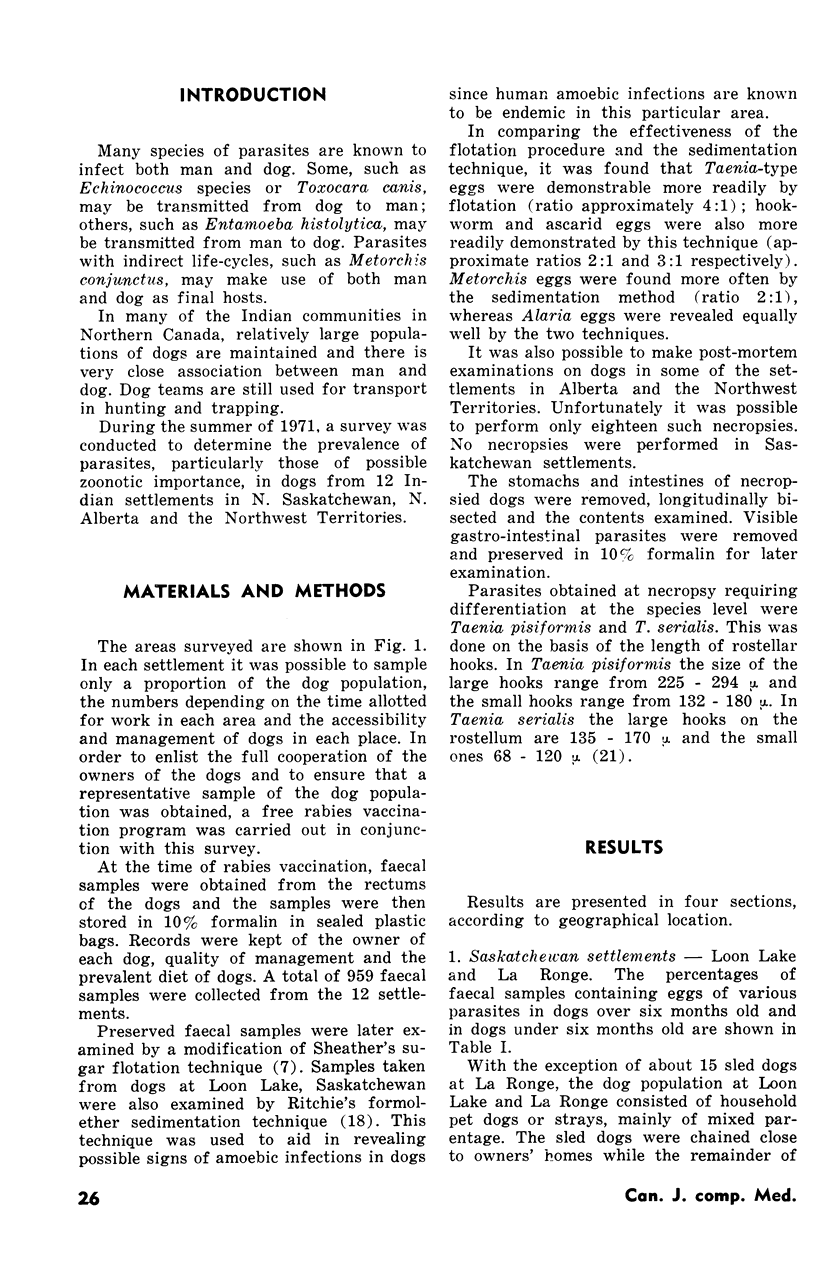
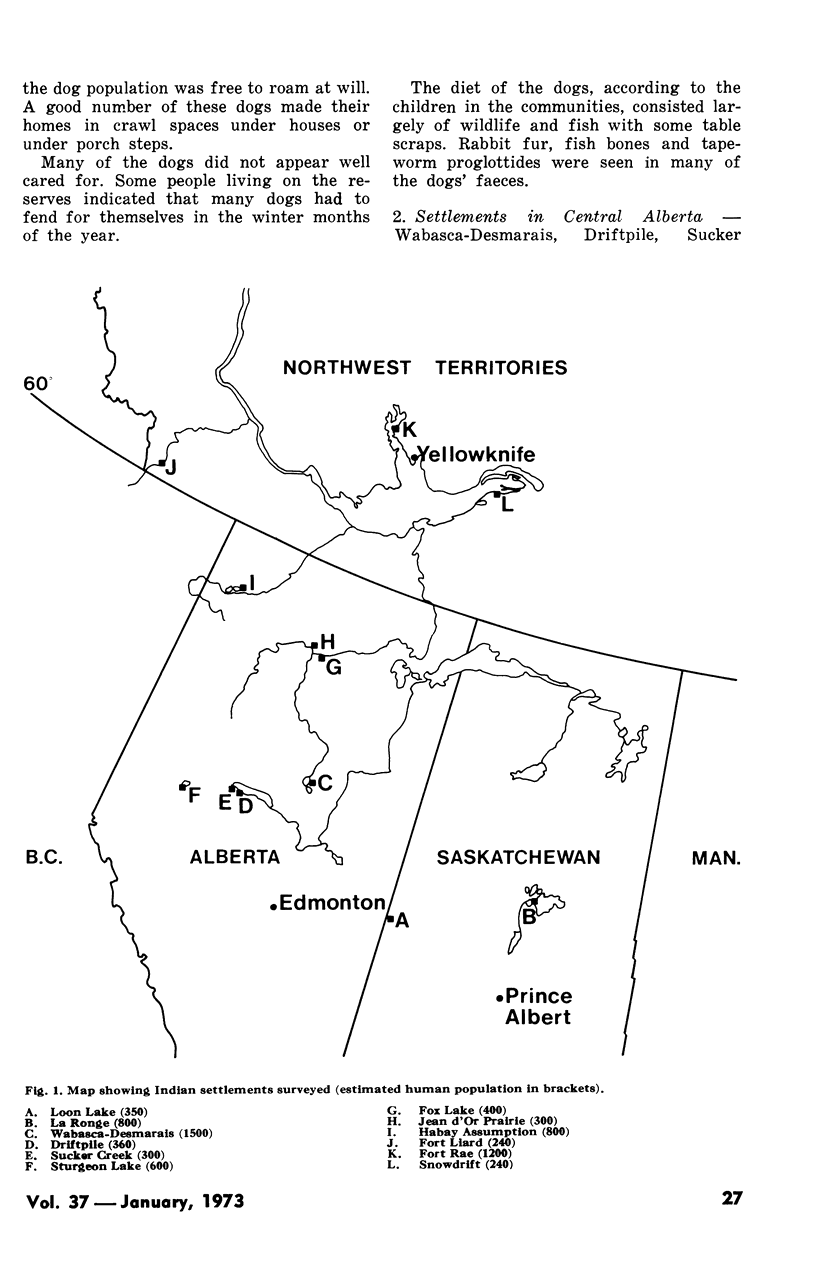
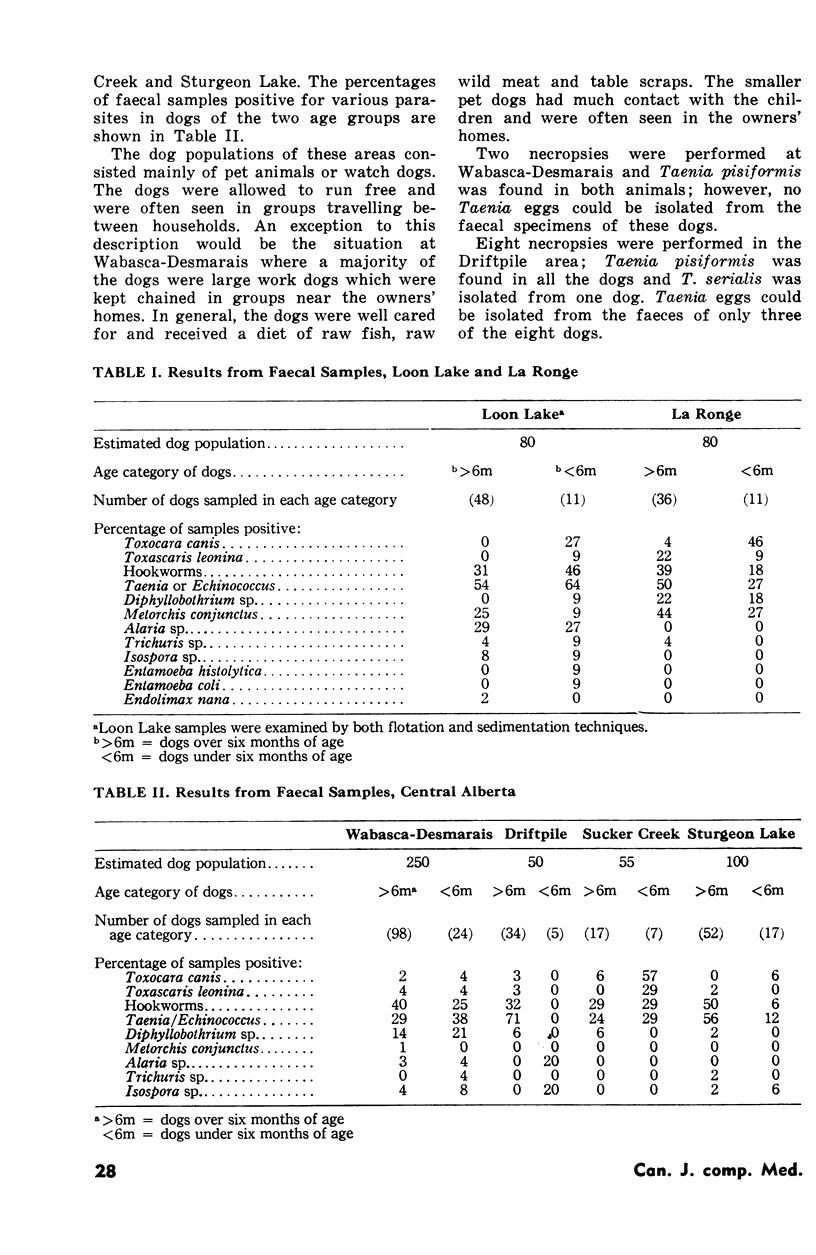

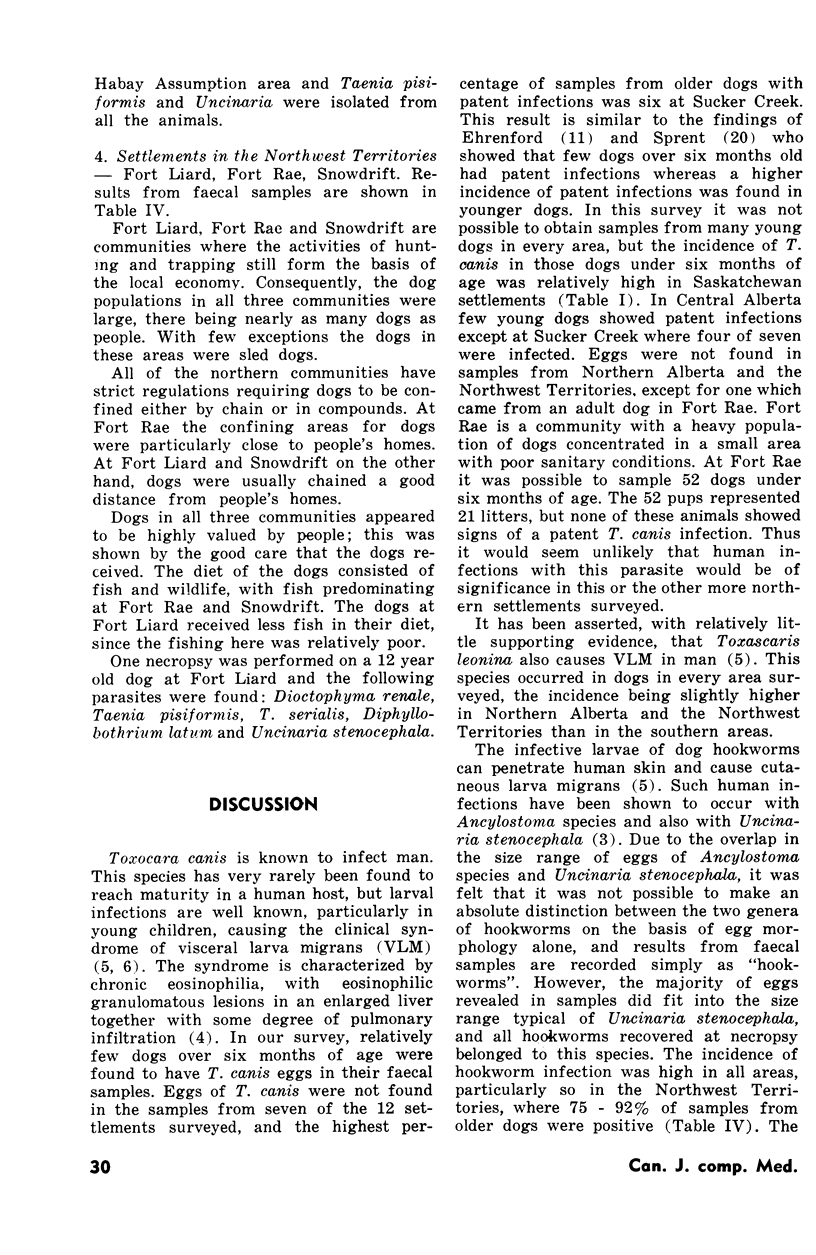
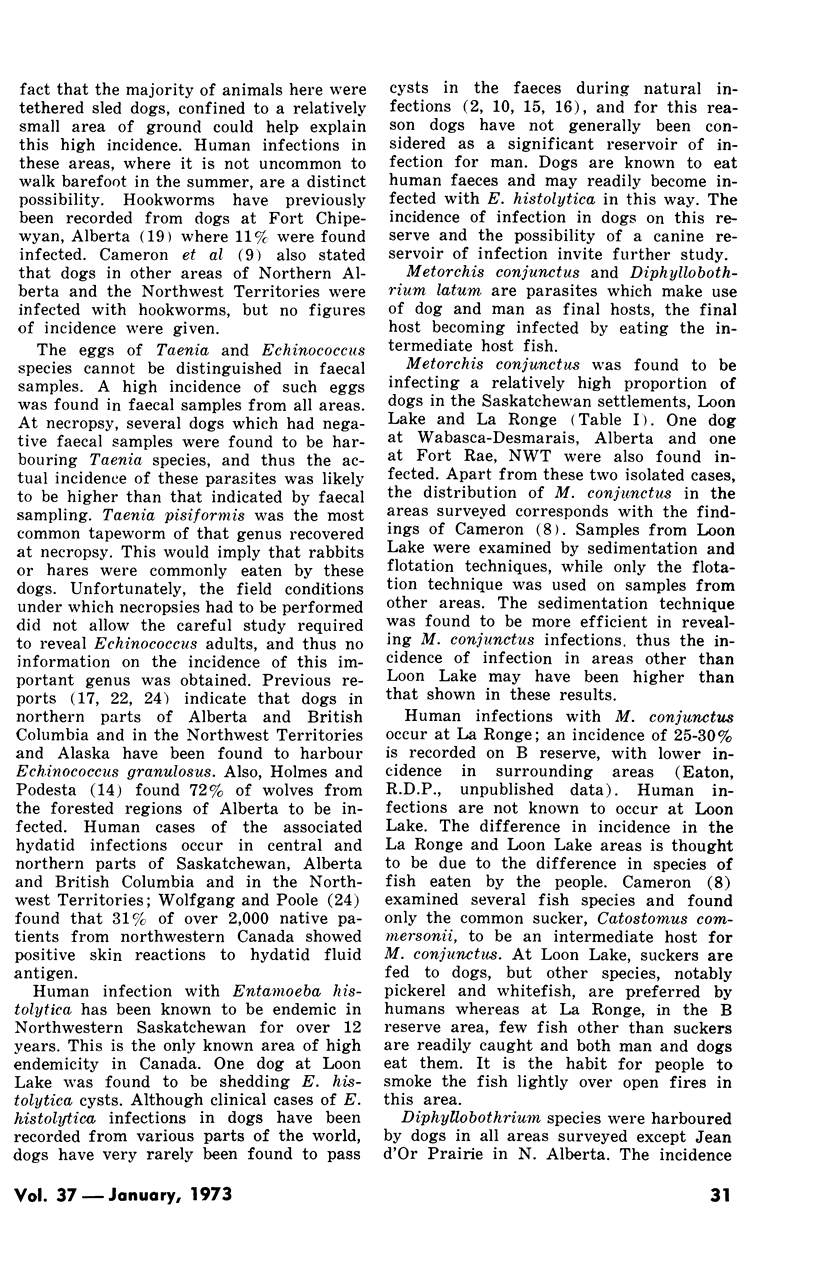
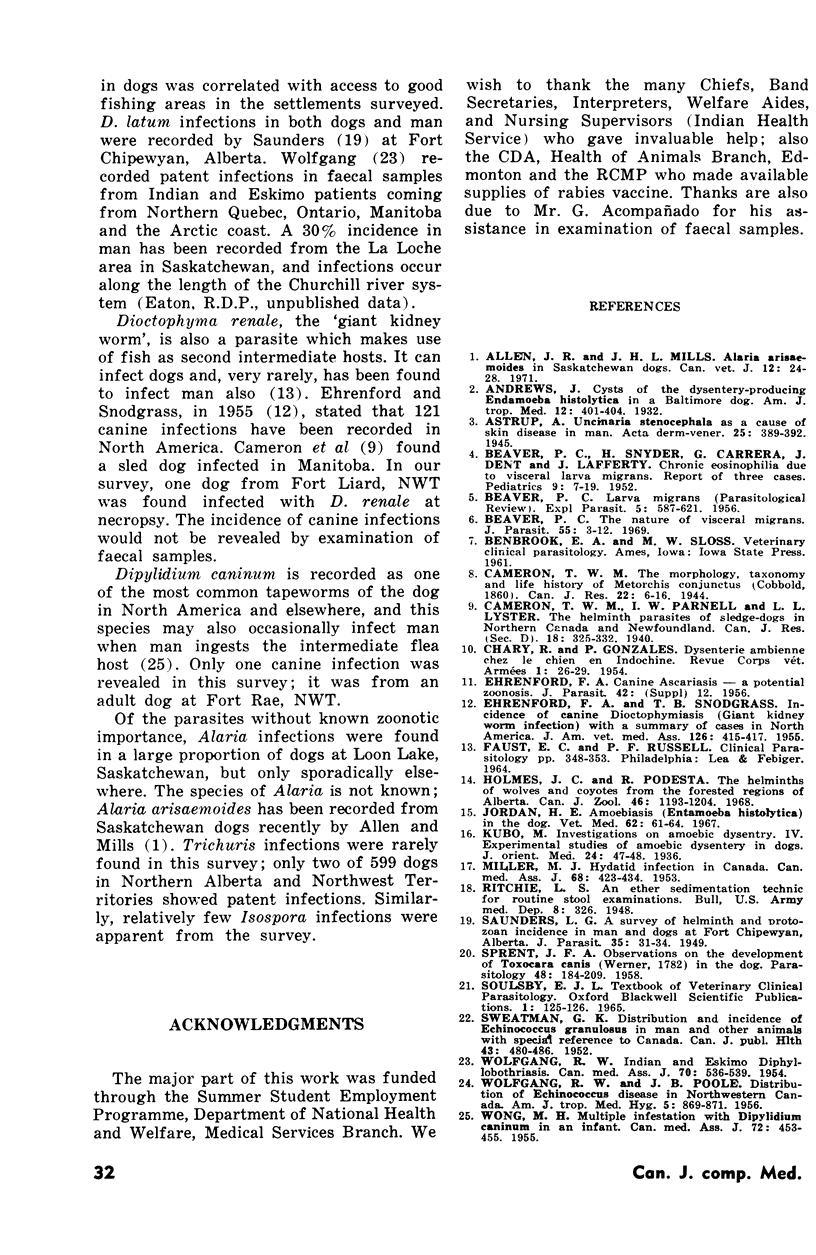
Selected References
These references are in PubMed. This may not be the complete list of references from this article.
- Allen J. R., Mills J. H. Alaria arisaemoides in Saskatchewan dogs. Can Vet J. 1971 Jan;12(1):24–28. [PMC free article] [PubMed] [Google Scholar]
- BEAVER P. C. Larva migrans. Exp Parasitol. 1956 Nov;5(6):587–621. doi: 10.1016/0014-4894(56)90032-7. [DOI] [PubMed] [Google Scholar]
- BEAVER P. C., SNYDER C. H., CARRERA G. M., DENT J. H., LAFFERTY J. W. Chronic eosinophilia due to visceral larva migrans; report of three cases. Pediatrics. 1952 Jan;9(1):7–19. [PubMed] [Google Scholar]
- Beaver P. C. The nature of visceral larva migrans. J Parasitol. 1969 Feb;55(1):3–12. [PubMed] [Google Scholar]
- EHRENFORD F. A., SNODGRASS T. B. Incidence of canine dioctophymiasis (giant kidney worm infection) with a summary of cases in North America. J Am Vet Med Assoc. 1955 May;126(938):415–417. [PubMed] [Google Scholar]
- Jordan H. E. Amebiasis (Entamoeba histolytica) in the dog. Vet Med Small Anim Clin. 1967 Jan;62(1):61–64. [PubMed] [Google Scholar]
- POOLE J. B., WOLFGANG R. W. Distribution of Echinococcus disease in Northwestern Canada. Am J Trop Med Hyg. 1956 Sep;5(5):869–871. doi: 10.4269/ajtmh.1956.5.869. [DOI] [PubMed] [Google Scholar]
- SPRENT J. F. Observations on the development of Toxocara canis (Werner, 1782) in the dog. Parasitology. 1958 May;48(1-2):184–209. doi: 10.1017/s0031182000021168. [DOI] [PubMed] [Google Scholar]
- SWEATMAN G. K. Distribution and incidence of Echinococcus granulosus in man and other animals with special reference to Canada. Can J Public Health. 1952 Nov;43(11):480–486. [PubMed] [Google Scholar]
- WOLFQANG R. W. Indian and Eskimo diphyllobothriasis. Can Med Assoc J. 1954 May;70(5):536–539. [PMC free article] [PubMed] [Google Scholar]
- WONG M. H. Multiple infestation with Dipylidium caninum in an infant. Can Med Assoc J. 1955 Mar 15;72(6):453–455. [PMC free article] [PubMed] [Google Scholar]


